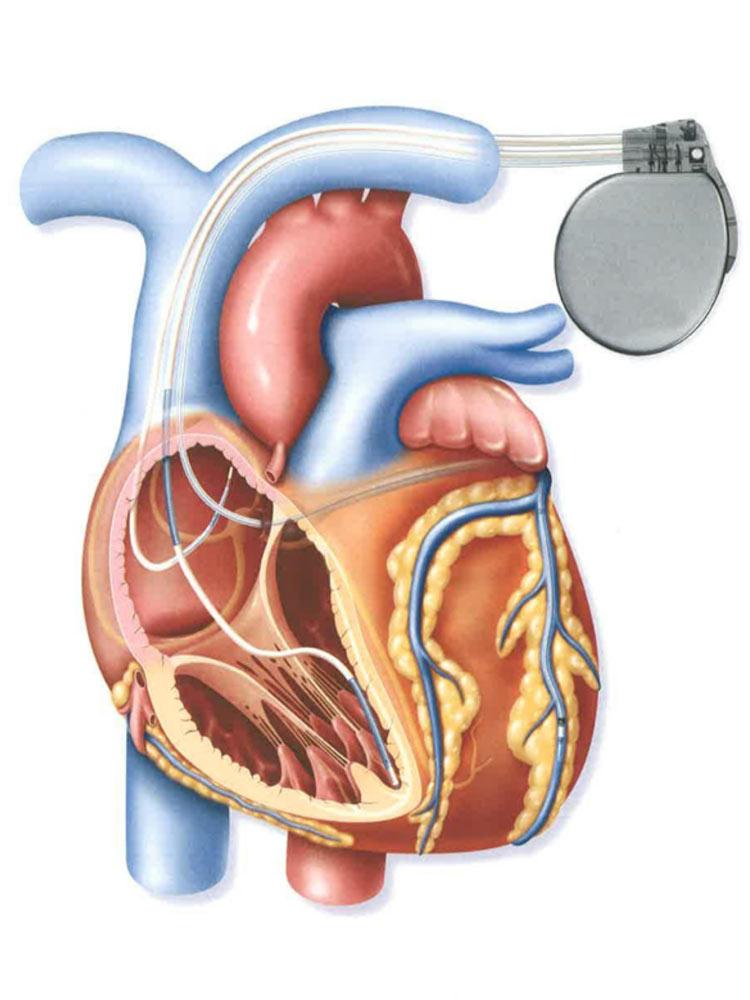CARDIAC RESYNCHRONIZATION DEVICE

CARDIAC RESYNCHRONIZATION DEVICE – BIVENTRICULAR PACING
Cardiac Resynchronization Devices (CRT)
Cardiac resynchronization (CRT) devices are an advanced treatment for heart failure – this treatment is also called biventricular pacing. It is a treatment via the use of an implantable device (ie a non-pharmacological one). It is one of the last steps in the escalation treatment algorithm for patients with heart failure whose symptoms do not ameliorate despite the employment of the maximum possible medications.
The layout of CRT devices is similar to that of pacemakers or defibrillators. They consist of a generator (equiped with an “electronic brain”) and the electrodes. The generator, however, is slightly larger than ordinary pacemakers. The other significant difference is that they require an extra electrode. In total, they feature an electrode placed in the right atrium of the heart, an electrode placed in the right ventricle of the heart and an electrode placed in the coronary sinus. The coronary sinus is the largest vein of the heart. Advancing a “cable” into it allows for the direct pacing of the left ventricle (due to anatomical proximity). The implantation process, although more technically demanding, is more or less similar to that of a conventional pacemaker and carries similar risks (see corresponding article). If the patient has already been treated with a permanent pacemaker or defibrillator, it is possible to upgrade the system by implanting an additional electrode and replacing the simple generator with a CRT generator.
CRT devices, although they can function as ordinary pacemakers their the main purpose is to override as much as possible the “normal” conduction system of the heart (which may be in function but this function is abnormal). In other words, the CRT device “replaces” critical parts of the conduction system and transmits the electrical stimuli in a way that would happen if the latter was completely healthy. Target of this procedure is to achiece a more effective mechanical contraction of the heart with a subsequent improvement of the patient’s symptoms. Therefore, we seek a benefit from the implantation of CRT devices in patients who fullfil the following two criteria: a) heart failure that does not respond to medication and b) specific electrocardiographic disorders that reveal an uncoordinated mechanical contraction of the heart muscle. In the case that a patient has a concommitant indication for a cardiac defibrillator, then CRT devices may support this function as well; these CRT models are called CRT-D, as opposed to CRT-P which do not have defibrillation capability.
If you have been treated with a CRT device you should avoid strong magnetic fields (such as in airport control) as they are likely to affect its function (newer devices are less susceptible to this phenomenon).
